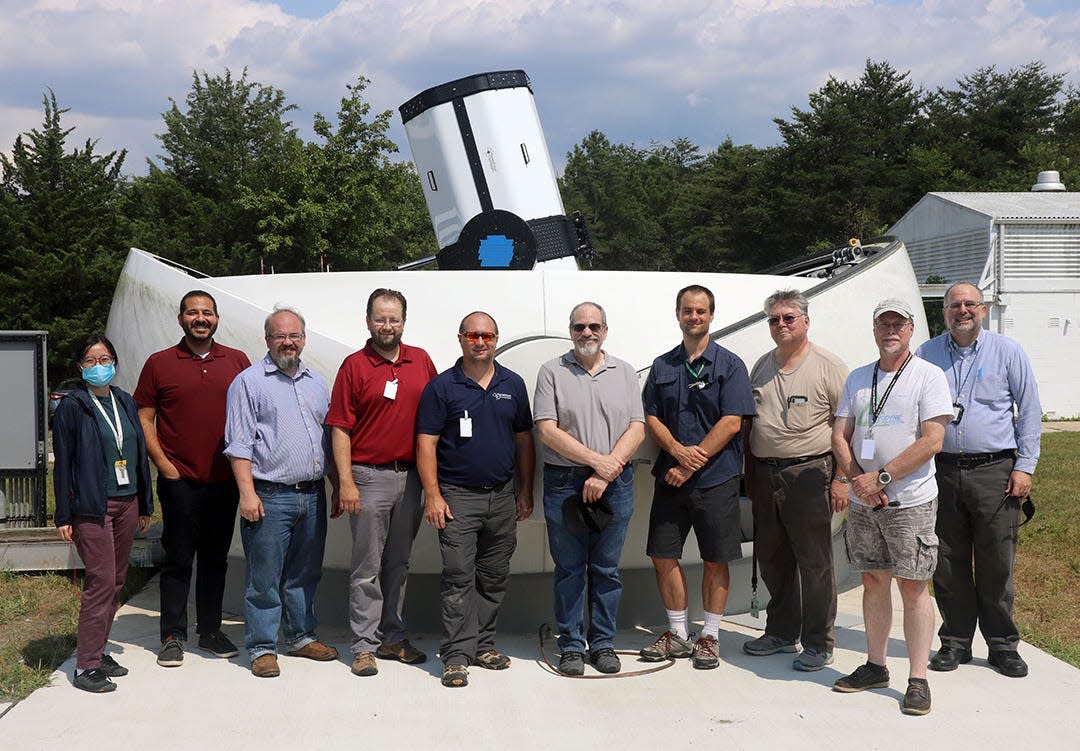Adrian telescope manufacturer working with NASA on laser communications for space missions

A telescope designed by Adrian-based PlaneWave Instruments is being used by NASA to demonstrate laser communication technology for future spaceflight missions.
A PlaneWave RC700 laser communication telescope was installed in November at NASA’s Goddard Space Flight Center in Maryland.
“We couldn’t be more thrilled that the RC700 will be used in NASA’s laser communication project,” PlaneWave’s technical services manager, Matt Dieterich, said in a news release. “The opportunity to be a part of a ground-breaking project with NASA is the reason we strive to create the highest performing telescopes and gimbals.”
The development of the RC700 began when PlaneWave’s team realized that the industry needed more from laser communication, the release said. From software, design, assembly and testing, this is the first telescope engineered to meet the exact needs of the consumer.

"Previous laser communication missions at NASA have been supported by one-of-a- kind ground terminals built specifically for each mission. If NASA is to build a global network of optical terminals to enable widespread use of optical communications, then a blueprint for an economical ground terminal able to support a variety of missions is needed," a research paper about the project said.
The paper said optical communications offer a way for space missions to return data to Earth at higher rates than what is possible by radio communications. Also, the size, weight and power requirements of an optical terminal needed for a given data rate are less than an equivalent radio terminal, the paper said.
An impediment to adopting laser communications has been a lack of an existing ground network of terminals, the paper said. A mission that wanted to use laser communications would need to create both a terminal to use in space as well as terminals on the ground to receive the signal from the spacecraft. Not only does that add cost to the project, but the equipment that is built is specific to that mission and will go into storage when that mission is over.
"This is not an economical approach and does nothing to grow the number of optical ground stations available to future missions," the paper said. "In essence, each mission that wants to take advantage of the benefits of laser communication has to start from scratch to provide a ground terminal network to support it. As long as this is the case, the cost for using laser communications will be too high for most missions to consider."
This project with the RC700 aims to address that by developing a standard ground terminal design that can be reconfigured for each mission with no additional engineering needed, the paper said.
“All we had to do was listen,” Eric Blackhurst, vice president of sales and marketing at PlaneWave, said in the release. “The industry had gaps in technology, and we knew we could fill those gaps.”
With PlaneWave’s technology, optics and tracking, customers who need to perform high-precision satellite tracking can now do so faster and more accurately than ever before, the release said.
“Everything that we do stems from our mission to build the perfect telescope, and the RC700 took us one step closer to that goal," PlaveWave president and CEO Richard Hedrick said in the release.
PlaneWave Instruments’ recent partnership with Hart Scientific Consulting International to offer the first commercially pre-integrated adaptive optics solution, which helps improve the image quality of ground-based telescopes, will further expand the RC700’s capabilities and revolutionize the laser communications market by continuing to meet the industry’s specific needs and providing solutions that lead to higher data throughput, the release said.
“We are doing what no one else has done as a commercial off-the-shelf telescope manufacturer, but with commercial off-the-shelf adaptive optics units we hope to advance the laser communications market even further,” Dieterich said in the release.
This article originally appeared on The Daily Telegram: PlaneWave Instruments working on laser communications for spaceflight

